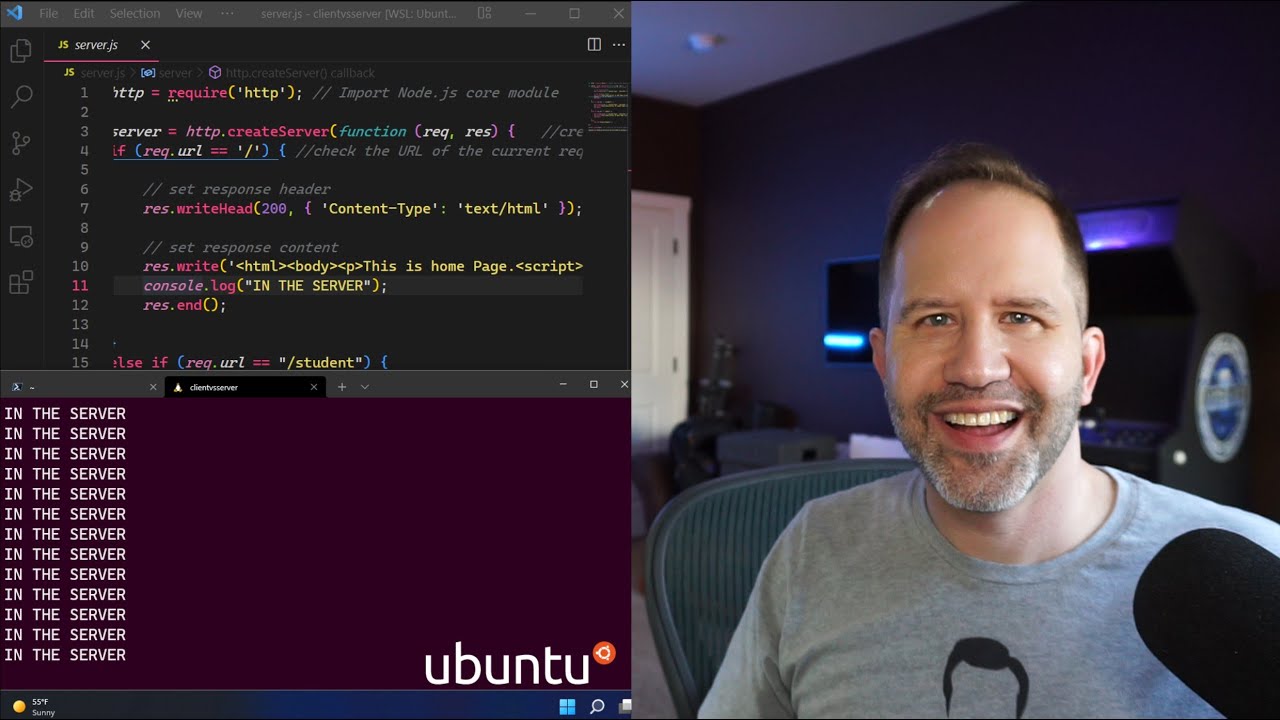JavaScript Visualized - Execution Contexts
Summary
TLDRThis video script provides an in-depth explanation of the execution context in JavaScript, focusing on how it operates during the execution of code. It explores key concepts such as the creation and execution phases of execution contexts, hoisting, the scope chain, and closures. The script delves into how the global execution context is formed, the role of the lexical and variable environments, and how function executions create new contexts. It also discusses how variables declared with `const`, `let`, and `var` are handled, and how functions are hoisted. The video aims to clarify complex JavaScript concepts with practical examples, offering insights into scope, closures, and memory management.
Takeaways
- 😀 An execution context is created whenever a script is loaded or a function is invoked, defining the environment for code execution.
- 😀 The execution context goes through two phases: the creation phase (where memory space is allocated) and the execution phase (where the code is actually run).
- 😀 The global execution context has several components, including the global environment record, which helps track the bindings for variables and functions.
- 😀 A realm represents an isolated environment where code runs, such as a browser tab or iframe, and includes built-in objects like Array and Function.
- 😀 Variables declared with `const`, `let`, or `class` are hoisted but uninitialized during the creation phase, leading to potential reference errors if accessed before initialization.
- 😀 Variables declared with `var` are hoisted and initialized to `undefined` during the creation phase and are redefined during the execution phase.
- 😀 Function declarations are hoisted and initialized during the creation phase, which allows invoking functions before their actual declaration in the code.
- 😀 The lexical environment in the execution context manages bindings for variables, while the variable environment specifically handles `var` declarations.
- 😀 The scope chain mechanism allows the engine to traverse environments to find variable bindings by using the outer environment property of the environment record.
- 😀 Closures occur when an inner function retains access to the outer function's environment, allowing it to reference variables from the outer scope even after the outer function has finished executing.
Q & A
What is an execution context in JavaScript?
-An execution context defines the environment in which JavaScript code is executed. It contains various components that the engine uses to manage the execution flow, such as environment records that track variable and function bindings.
What are the two phases of an execution context?
-The two phases of an execution context are the creation phase and the execution phase. During the creation phase, memory is allocated for variables and functions, while in the execution phase, the actual code is executed.
What is the role of a realm in JavaScript execution?
-A realm is an isolated environment where JavaScript code runs. For example, in a browser, a new realm is created when a new tab or iframe is opened. It consists of intrinsic objects, the global object, and other components that facilitate code execution.
What is the difference between the global environment record and the lexical environment?
-The global environment record is used to manage global variable and function declarations, while the lexical environment refers to the environment record that stores bindings for variables declared with keywords like `const` and `let`, which aren't hoisted.
What happens during the creation phase for variables declared with `const` or `let`?
-During the creation phase, memory is allocated for variables declared with `const` or `let`, but they remain uninitialized. They only get their actual value during the execution phase, and accessing them before initialization leads to a reference error.
What does the `this` keyword refer to in the global environment record?
-In the global environment record, the `this` keyword refers to the global object, which is typically the `window` object in a browser or `global` in Node.js.
How are function declarations handled during the creation phase?
-Function declarations are hoisted and initialized during the creation phase. A function object is created, which contains properties such as the environment (pointing to the environment record where the function was declared) and the call method.
What is hoisting in JavaScript?
-Hoisting refers to the behavior where variable and function declarations are moved to the top of their containing scope during the creation phase. However, only the declarations are hoisted; the initializations happen during the execution phase.
What is the scope chain in JavaScript?
-The scope chain is the mechanism by which the JavaScript engine searches for variables. If a variable is not found in the current execution context, the engine traverses the outer environment chain until it finds the binding or reaches the global context.
How does closure work in JavaScript?
-Closures in JavaScript occur when an inner function retains access to the environment of its outer function. This allows the inner function to remember and access variables from the outer function even after the outer function has finished execution.
Outlines

Этот раздел доступен только подписчикам платных тарифов. Пожалуйста, перейдите на платный тариф для доступа.
Перейти на платный тарифMindmap

Этот раздел доступен только подписчикам платных тарифов. Пожалуйста, перейдите на платный тариф для доступа.
Перейти на платный тарифKeywords

Этот раздел доступен только подписчикам платных тарифов. Пожалуйста, перейдите на платный тариф для доступа.
Перейти на платный тарифHighlights

Этот раздел доступен только подписчикам платных тарифов. Пожалуйста, перейдите на платный тариф для доступа.
Перейти на платный тарифTranscripts

Этот раздел доступен только подписчикам платных тарифов. Пожалуйста, перейдите на платный тариф для доступа.
Перейти на платный тарифПосмотреть больше похожих видео

How does javascript execute code + call stack | chai aur #javascript

How JavaScript Works 🔥& Execution Context | Namaste JavaScript Ep.1

How JavaScript Code is executed? ❤️& Call Stack | Namaste JavaScript Ep. 2

Plugin - Part 1 | What is Plugin? | Quick Introduction to Plugin | Dynamic CRM

Client-side vs Server-side, Front-end vs Back-end? Beginner Explanation of JavaScript on the Web

ARM7 Pipelining: 3 Stage Pipelining, Issues, and Overview | ARM 7
5.0 / 5 (0 votes)
